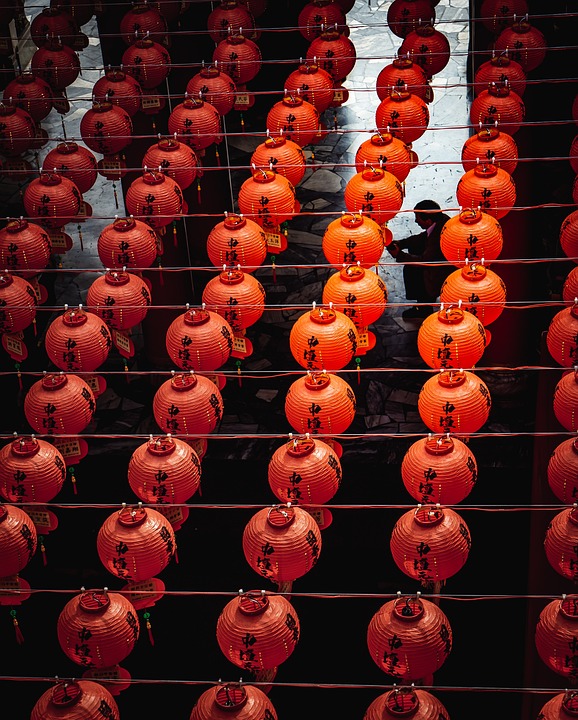
BEIJING, March 20, 2024 /PRNewswire/ — Chinese President Xi Jinping, also general secretary of the Communist Party of China Central Committee and chairman of the Central Military Commission, inspected the city of Changde in Central China’s Hunan Province on Tuesday.
During the inspection, Xi visited a cultural street and a village. He learned about the restoration and utilization of historical and cultural blocks, the comprehensive management of urban water environment, preparation work for spring farming, and the improvement of grassroots governance efficiency.
Changde, with a 2,200-year history, is rich in culture. By the late Qing Dynasty (1644-1911) and the early period of the Republic of China (1912-49), more than 15 guild halls were established in the city by businessmen from various regions across the country. Historically, Changde Riverside Street was a prosperous and thriving dock. Yet most of the major architecture along the street was destroyed during the War of Resistance against Japanese Aggression (1931-45).
In 2016, Changde restored the 1,500-meter-long Riverside Street, with a total area of 133,000 square meters. Along with the street’s structure and architecture, museums, small shops and art studios that showcase local intangible cultural heritage (ICH) and craftsmanship also give more vitality to the ancient street reborn.
Zhang Yiwu, a professor at Peking University, told the Global Times that historical cultural blocks like the Riverside Street in Changde are now burgeoning across the country as part of a “new pattern” in promoting the country’s cultural tourism.
“The logic behind this pattern is to interpret a city’s historical tales in modern ways. This is the reason that Riverside Street is a compound that includes not only old architecture but also trendy restaurants,” Zhang said.
Deep integration
China entertains a rich array of ICH resources. Presently, China ranks first in the world with 43 projects inscribed on the ICH list of the United Nations Educational, Scientific and Cultural Organization. In China, through systematic protection and inheritance, creative transformation, and innovative development, ICH has been fully integrated into modern life.
People can immerse themselves in Changde’s rich cultural atmosphere by simply strolling along the Riverside Street, experiencing the deep integration of ICH with local cultural and tourist activities.
One art museum on the street is especially dedicated to ICH, showcasing live performances of different types of Chinese operas such as Han opera, flower-drum opera, and sixian but with unique Changde styles, as well as various traditional musical instruments such as the Changde yugu (literal translation: fish drum).
In the small shops along the street, people can also discover Taoyuan embroidery, from a county by the same name, on display and they can also get embroidery souvenirs.
As a Hunan provincial ICH, Taoyuan embroidery dates back to the Xia Dynasty (c.2070BC-c.1600BC) and Shang Dynasty (c.1600BC-1046BC), featuring vibrant colors, bold designs, and is full of vitality. In recent years, through the integration of ICH with “cultural and creative products,” films and TV dramas, short videos and new technologies, the Taoyuan embroidery industry has grown increasingly strong.
Some regions in Changde, such as Anxiang county, are famous for woodcarving. The style is vivid and expressive, depicting lively themes that embody local people’s aspirations for life.
Pan Nenghui, a woodcarving inheritor in his 50s, from Anxiang, used to make carvings for clients abroad while he was working in different places such as Hong Kong and Shenzhen, but he wanted to design his own pieces that reflect the local culture and history of Changde. That was when he decided to open his own studio in the year 2000. Seeing the burgeoning tourism development along Riverside Street, he moved his studio there in 2019 to show this traditional art to a wider audience. His studio has been one of the attractions on the street since then.
Broader prospect
Zhang said that operating Riverside Street as a tourist site can help the locals “manage its immovable historical legacy with more flexibility.” Riverside Street not only hosts retro-looking architecture, but also a community of residents, intangible cultural inheritors and so forth.
The cultural block would not be complete without people; local residents are the “crux that forms the site’s cultural touristic ecology,” he added.
“Indigenous people’s everyday lives can also exhibit a city’s cultural characters. They continue the historical spirit of the Riverside Street,” Zhang emphasized.
While prioritizing the protection and inheritance of historical and cultural districts, including Changde Riverside Street, and revitalizing them has always been a key focus for governments across the country. As of October 2023, there were a total of 142 historical and cultural cities approved by the State Council, with more than 1,200 designated historical and cultural districts. Local authorities have been stepping up efforts to revitalize historical cultural districts.
Cultural policy researcher Song Weiping told the Global Times that in the future, such historical cultural blocks are likely to become even more “modern” to embrace particularly young visitors.
Sharing a similar opinion with Song, Zhang told the Global Times that traditional cultural blocks should be open to embracing sectors such as “cultural and creative products,” “pop culture events,” as well as “live shows and performances.” And these are also some experiences that other cities can take from Changde.
“Traditional cultural blocks should live in people’s current cultural experiences,” Zhang said.
Read more: https://www.globaltimes.cn/page/202403/1309196.shtml
SOURCE Global Times

Originally published at https://www.prnewswire.com/news-releases/global-times-changde-riverside-street-integrates-ich-with-tourism-302095356.html
Images courtesy of https://pixabay.com
The post Global Times: Changde Riverside Street integrates ICH with tourism first appeared on Old Post Books.
Art - Old Post Books originally published at Art - Old Post Books








